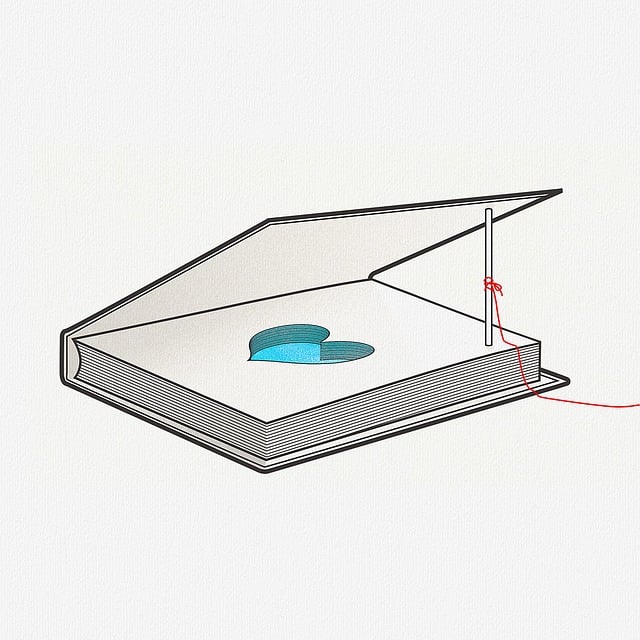Discover the transformative power of veneers as we delve into whether they can work wonders on teeth with imperfections. Unveil a renewed smile today!
1. Understanding Veneers: A Solution for Smile Enhancement
Veneers are a popular dental solution for achieving a flawless smile. These wafer-thin, custom-made shells are designed to cover the front surface of teeth, providing a natural-looking and long-lasting enhancement. They are typically made from porcelain or resin composite materials and are bonded to the teeth using dental adhesive.
There are several reasons why veneers are sought after by individuals looking to improve their smiles. First and foremost, they can effectively hide a range of dental imperfections, such as stained or discolored teeth, cracks, chips, and even minor misalignments. Veneers are also highly customizable, allowing dentists to tailor the shape, size, and color to match each patient’s desired outcome and natural teeth. The procedure is relatively non-invasive compared to other cosmetic treatments, making it a popular choice for those wanting quick and dramatic results.
- Veneers enhance the appearance of teeth, providing a natural and aesthetically pleasing outcome.
- They can cover various dental imperfections such as discoloration, cracks, and chips.
- The shape, size, and color of veneers are customized for each individual, ensuring a perfect match to their natural teeth.
- The procedure is non-invasive, making it an attractive option for those seeking immediate smile transformation.
With proper care, veneers can last for many years, providing a durable and stain-resistant solution. Regular dental hygiene practices like brushing, flossing, and routine check-ups are essential for maintaining the longevity of veneers. By understanding the benefits and possibilities that veneers offer, individuals can confidently seek smile enhancement through this effective cosmetic dentistry solution.
2. Debunking Myths: Putting Veneers over Bad Teeth
When it comes to transforming a smile, veneers are often a popular choice. However, there are several myths surrounding the idea of putting veneers over bad teeth that need to be debunked.
First and foremost, it is important to understand that veneers are not a solution for severe dental issues. Veneers are primarily used to enhance the appearance of teeth that are chipped, discolored, or slightly misaligned. They are not designed to fix structural problems such as severe tooth decay, gum disease, or missing teeth. In fact, placing veneers on teeth with pre-existing dental issues can actually worsen the problem. It is advisable to address any underlying oral health concerns before considering veneers.
- Myth 1: Veneers will fix all dental problems.
- Myth 2: Veneers can be placed on teeth with extensive decay.
- Myth 3: Veneers can be used as a substitute for orthodontic treatment.
Another misconception is that veneers can be used as a substitute for orthodontic treatment. While veneers can improve the appearance of mildly misaligned teeth, they are not able to correct significant bite issues or major tooth misalignment. In such cases, orthodontic treatment, such as braces or Invisalign®, may be necessary to properly align the teeth and improve the overall oral health.
3. Exploring the Possibilities: Transforming Imperfections with Veneers
Veneers have revolutionized the dental industry, offering an effective solution to transform imperfect smiles. These thin, custom-made shells are made from high-quality materials, such as porcelain or resin, and are designed to cover the front surface of teeth. By doing so, veneers can effectively hide a range of dental imperfections, restoring confidence and giving individuals the smile they’ve always dreamed of.
One of the most remarkable aspects of veneers is their versatility. They can address a variety of dental issues, including discoloration, chipped or broken teeth, gaps, misalignment, and even worn-down enamel. With veneers, individuals can achieve a natural-looking smile that seamlessly blends with their existing teeth. The procedure is minimally invasive, requiring only a thin layer of enamel to be removed to make space for the veneers. This preserves the majority of the natural tooth structure while providing a durable and long-lasting solution. Moreover, veneers are custom-designed for each patient, ensuring a precise fit and optimal aesthetics. Whether you’re looking to correct a single tooth or transform your entire smile, veneers offer a reliable and transformative solution.
4. Assessing Dental Conditions: Candidacy for Veneer Placement
Before deciding to proceed with veneer placement, it is crucial to assess the dental conditions of an individual to determine their candidacy. Not everyone is an ideal candidate for veneers, and a comprehensive evaluation must be conducted. Here are some key factors to consider:
- The overall oral health of the patient: Before placing veneers, it is important to ensure the patient has good oral health. Any existing dental issues such as tooth decay, gum disease, or teeth grinding should be addressed before veneers can be considered.
- Sufficient tooth enamel: Veneers require a certain amount of enamel to be present on the teeth. The enamel acts as a bonding surface for the veneer, ensuring its longevity and stability. If a patient has significant enamel erosion or thin enamel, alternative treatments may need to be considered.
- Adequate tooth alignment: Veneers are primarily used to improve the appearance of teeth and may not be suitable for individuals with severe misalignment or bite issues. Orthodontic treatment may be necessary prior to considering veneers in such cases.
- Desired cosmetic goals: It is crucial to determine the specific cosmetic goals of the patient. Veneers can address common aesthetic concerns such as discoloration, chips, or gaps. However, realistic expectations and clear communication between the patient and the dentist are essential for a successful outcome.
By carefully assessing these dental conditions, a dental professional can determine whether a patient is an appropriate candidate for veneer placement. It is important to remember that every individual is unique, and an individualized approach must be taken to ensure optimal results for each patient.
5. Collaborating with a Dentist: Tailored Solutions for Imperfect Teeth
Collaborating with a dentist can provide you with tailored solutions to address any concerns you may have about your imperfect teeth. Whether you’re dealing with discoloration, misalignment, or other dental issues, a dentist can guide you towards the most effective treatments to achieve a beautiful smile.
One option that a dentist may recommend is teeth whitening. This procedure can help remove stains and brighten your smile, giving you a newfound confidence. Dentists use professional-grade whitening agents that are safe and effective, ensuring optimal results. Additionally, they can customize the treatment to suit your specific needs, taking into account factors such as the level of discoloration and tooth sensitivity.
Another popular solution for imperfect teeth is orthodontic treatment. With advancements in orthodontics, there are now more discreet options available such as clear aligners and ceramic braces. These options offer a more aesthetically pleasing alternative to traditional metal braces. By collaborating with a dentist, you can find the most suitable orthodontic solution for your needs and achieve the straight smile you’ve always desired.
In addition to whitening and orthodontic treatments, dentists may also recommend veneers, crowns, or bridges to address other imperfections. These solutions can help improve the shape, size, and overall appearance of your teeth, resulting in a more harmonious smile. By collaborating with a dentist, you can explore these options and create a personalized treatment plan tailored to your unique dental needs.
In conclusion, partnering with a dentist can provide you with a range of tailored solutions to address imperfections in your teeth. From teeth whitening and orthodontics to veneers and crowns, there are numerous treatments available that can help you achieve your desired smile. Don’t hesitate to consult with a dentist who will guide you towards the most effective and appropriate treatments, allowing you to regain your confidence and showcase a beautiful, natural-looking smile.
6. Preparing for the Procedure: What to Expect during Veneer Placement
Before getting veneers, it’s important to prepare yourself for the procedure and know what to expect during the placement process. Here’s a helpful guide to help you get ready:
- Consultation: The first step is to schedule a consultation with your dentist. During this appointment, they will examine your teeth, discuss your goals, and determine if you are a suitable candidate for veneers.
- Customization: If you decide to go ahead with veneers, your dentist will take impressions of your teeth. These impressions will be used to create personalized veneers that perfectly fit your smile and meet your desired specifications.
- Temporary Veneers: While your custom veneers are being fabricated in the dental lab, your dentist may place temporary veneers on your teeth. These temporary veneers will protect your teeth and give you an idea of how your new smile will look.
- Tooth Preparation: Before placing the permanent veneers, a small amount of enamel may need to be removed from the front surface of your teeth. This step helps ensure a proper fit and allows the veneers to bond securely to your natural teeth.
Once your custom veneers are ready, your dentist will thoroughly clean your teeth and prepare them for bonding. They will then apply a special adhesive to attach the veneers to your teeth. After carefully positioning the veneers, a curing light will be used to harden the adhesive, ensuring a strong and long-lasting bond.
7. Maintaining a Radiant Smile: Long-Term Care for Veneered Teeth
Once you have invested in veneered teeth, it is crucial to maintain their radiance for years to come. Proper care and attention are necessary to ensure the longevity of your veneers. Here are some essential tips to help you maintain your stunning smile:
- Practice good oral hygiene: Brush your teeth at least twice a day with a soft-bristled toothbrush and fluoride toothpaste. This will prevent plaque buildup and keep your veneers looking clean and shiny.
- Floss daily: Regular flossing helps remove food particles and plaque from areas that your toothbrush may not reach, preventing gum disease and decay.
- Avoid staining food and drinks: Limit consumption of foods and beverages that can stain your veneers, such as coffee, tea, red wine, and berries. If you do indulge, rinse your mouth with water afterward or use a straw to minimize contact with your veneers.
- Quit tobacco use: Smoking or chewing tobacco can cause discoloration and damage to your veneers. Quitting is not only beneficial for your overall health but also for maintaining the beauty of your smile.
Furthermore, it is crucial to visit your dentist regularly for check-ups and professional cleanings. Your dentist will examine your veneers, ensuring they are in good condition and identify any potential issues early on. Remember, with proper care and attention, your veneered teeth will continue to enhance your radiant smile for many years to come!
In conclusion, veneers can be a great solution for improving the appearance of bad teeth. They offer a natural-looking smile enhancement, hiding imperfections and providing long-lasting results. However, it is important to consult with a dental professional to ensure suitability and to discuss possible alternatives. Enjoy your new confident smile!





